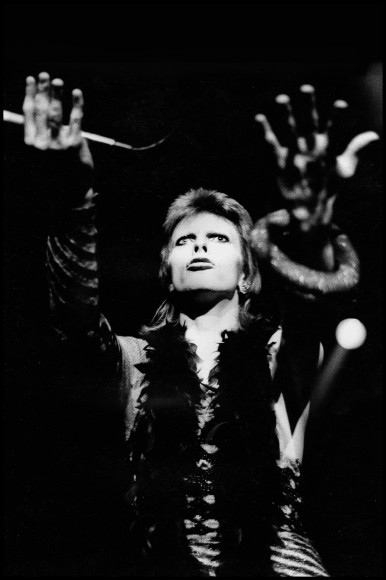The legend of Glam’s best-loved alter ego has been romanticised and deified for decades. David Bowie’s aura was finally fully realised on the 3rd of July 1973, years after such seminal releases as ‘The Man Who Sold The World’, ‘Changes’, ‘Oh! You Pretty Things’ and ‘Life on Mars’, with the words “Not only is this the last show of the tour, but it’s the last show we’ll ever do.”
‘The Rise and Fall of Ziggy Stardust’ was recorded in 1971, over a mere 10-day period. Just as effortlessly as the ‘Thin White Duke’ created this masterpiece, he orchestrated its suicide. The explosion of support that arose from Bowies performance of ‘Starman’ on Top Of The Pops, July 1972, flung Brixton-boy David Jones to such a dizzying height that fans daubed in lightning bolt designs and sparkling spandex reputedly indulged in an exhibition of sexual hysteria at the news of the rock ‘n’ roll hero’s departure, after all the chemistry between Mick Ronson and the famed frontman was far from plutonic with Bowie mimicking aural-sex on stage, a harmonica between the guitarist’s legs, whipping the hungry crowd into a frenzy.
This was to be one of many chapters in David Bowie’s creative path, a career epitomized by eclecticism, synonymous with an almost schizophrenic bank of characters and sounds. His most recent and arguably most surprising instalment ‘The Next Day’, an LP of unapologetic, intellectual grooves produced by the renowned Tony Visconti, sparked a ‘star-child’ revival, with the first retrospective of the music visionary’s trail, curated by London’s V&A gallery.
There have been rumours of a world tour, but current guitarist Earl Slick has denied that Bowie will ever play again. We can only hope his words are smoke.

